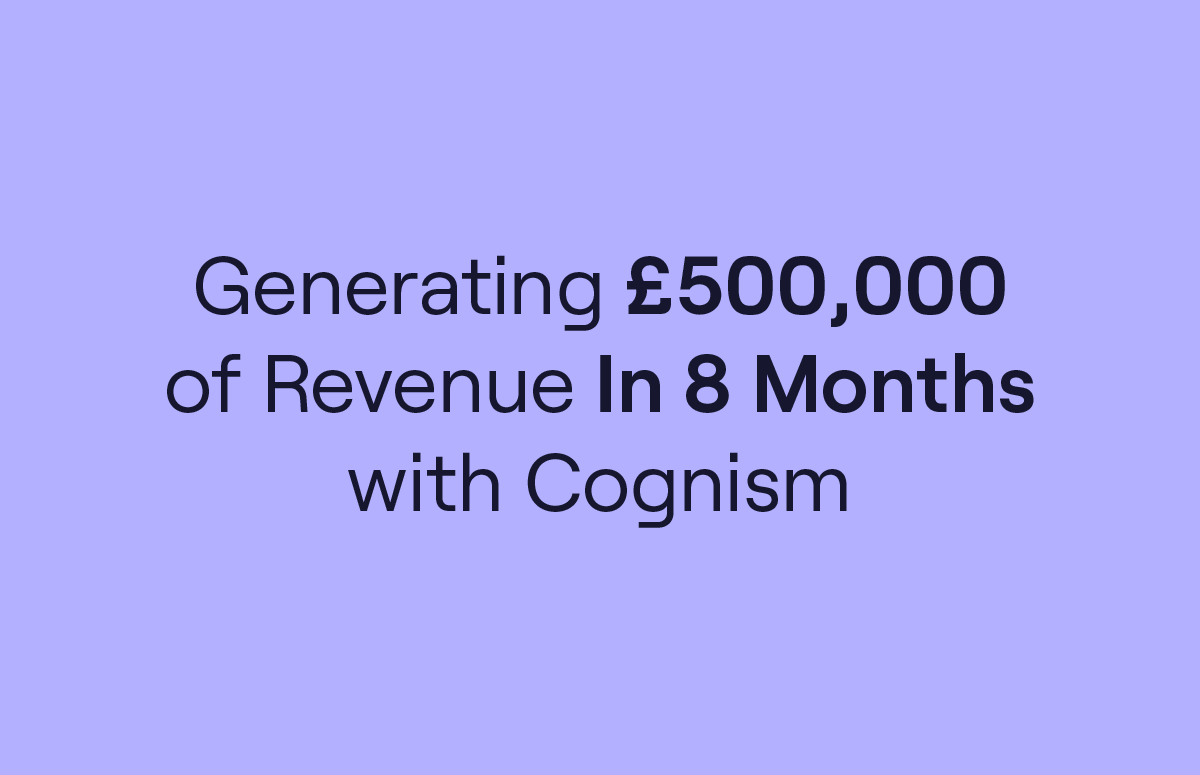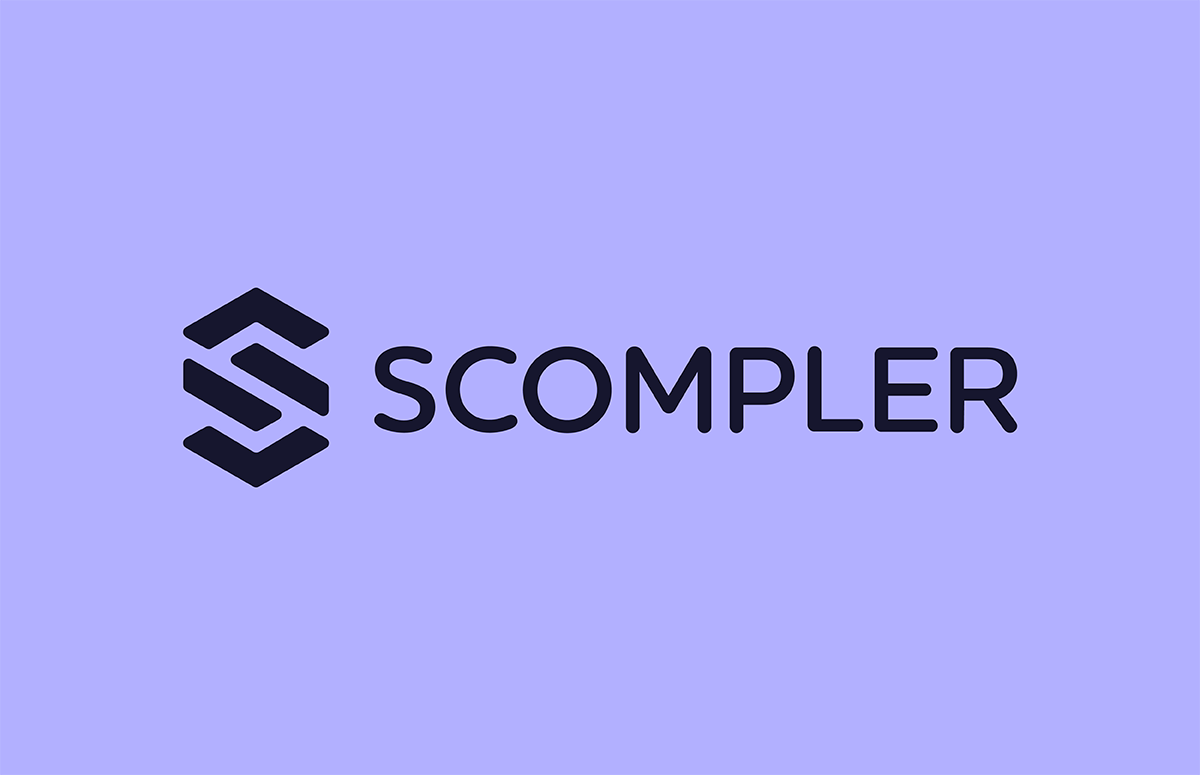Tips for Startup Sales and How It Differs to Enterprise
Navigating startup sales is a thrilling adventure.
From outbound selling techniques to mastering the cold call and fostering long-term customer relationships - there’s a lot to learn and many challenges to overcome.
Going from startup to enterprise sales is arguably the toughest. That’s why we’ve compiled this quick guide to help you navigate a scaling sales startup team.
Read on to uncover:
- The secrets of a winning startup sales strategy.
- The difference between startup and enterprise sales.
- How to find customers.
- Hiring a sales team.
What do salespeople do in startups?
A salesperson, AKA an SDR in a startup, is integral to achieving a company’s long-term goals. Their primary responsibility is to generate revenue by selling a company’s products and services. This involves researching potential customers, understanding their needs, and creating customised solutions for them.
Think all things outbound!
An SDR will utilise all the tools in his or her belt to reach their prospect with the right message at the right time.
This involves cold calls, video calls, emails, LinkedIn messages and any other creative way to communicate. Sometimes multiple touchpoints with each prospect a day.
Do startups need a sales team?
In short, yes - startups need a sales team. While many startups have relied on word of mouth and organic growth to get off the ground, having a dedicated sales team can help you rapidly expand your customer base and achieve sales goals more quickly.
A sales team can help entrepreneurs better manage customer relationships, create an effective strategy, implement an efficient sales process and drive revenue growth with more closed deals.
Startup companies often face the challenge of finding customers in a competitive landscape. To maximise their chances of success, startup companies will typically employ Sales Development Representatives (SDRs) to help find and close deals with customers.
What is a sales development representative in a startup?
SDRs are responsible for identifying prospective customers, qualifying leads, and setting up meetings between the company and potential clients. To do so, SDRs must have a strong understanding of their target market and be able to develop cold calling strategies that will help them reach out to the right people.
SDRs also need to have an in-depth knowledge of the company’s product or services, so they can effectively explain how it can benefit potential customers. This requires SDRs to stay up-to-date on industry trends and developments for improved startup sales plans.
Startup sales strategy
Selling as a startup can be a very challenging endeavour. It requires patience, creativity, and an understanding of your ideal customers’ needs and goals. Here are some of the most popular strategies:
1. Establish your niche
The great thing about B2B sales is that it’s brimming with diverse markets, which means there are more opportunities for startups to target.
Start by identifying your ideal customer profile. Research their needs and find a way your product can offer a solution to their biggest challenges. Get creative and think outside the box.
2. Get on social media
Social selling can be a huge boon for startup sales. You can build brand awareness and connect with buyers, and by being active and sharing your knowledge, you build trust in your business.
Laura Erdem, Sales Lead at Dreamdata, said:
“I started being extremely active on LinkedIn. I connected with the right people in our ICP and started to post daily. The key was in delivering value without selling at all; it was all about building awareness.”
“People resonated with the content I was putting out, I wasn’t pitching at all, but I was still getting meetings booked. Being active on LinkedIn was a great way to start conversations with people in my target accounts.”
“I find startup sales is very conversational; it’s about having a dialogue between people. That’s why LinkedIn works. You have to do it strategically, though. Only connect with people who fit your ICP and comment on their posts. You have to build a relationship before you can do anything else.”
3. Score your efforts
Lead scoring is the process of ranking prospects and leads on a scale of one to 10 based on their value to your business.
Sales strategies for startups can be complex and challenging to navigate. Lead scoring provides a straightforward way to assess the effectiveness of your prospecting efforts.
4. Talk to the right people
To increase revenue for your business, you must generate sales by having customers purchase your product or service. So don’t waste time targeting low-level managers and staff.
Laura said:
“The main thing here is the number of stakeholders involved in any deal. When selling to a startup, you usually have easy access to the decision-maker. Often it’s just the CEO or founder. They have a problem, you demo the product, they like it, deal signed! It is, of course, a dream scenario, but usually, you wouldn’t meet more than three stakeholders when selling to a startup.”
“When selling to an enterprise, one AE oversees the deal, coordinating the process for all the decision-makers, influencers and internal resources that will help during the process, either from the technical perspective or 1:1s with C-level decision-makers.”
“So straight away, you can see what the challenges are. First of all, there are lots more people involved in an enterprise sale. Secondly, you don’t have easy access to the decision-makers; you must go through an intermediary. Thirdly, enterprise sales take a much longer time as many more stakeholders are involved.”
“Also, with enterprise, you must provide lots of information to the stakeholders involved. In a startup sale, you might have one deck or one-pager for the CEO or founder, but in an enterprise sale, you’ll have decks for sales, marketing, finance, IT, legal etc.! There’s much more to think about, which boils down to project and stakeholder management.”
You can make this process much easier by using a sales intelligence tool like Cognism to find details of decision-makers to outreach to.
5. Create lists
The one thing every B2B sales team needs is a good, up-to-date, GDPR-compliant prospecting list. This will save you time by ensuring you’re prospecting to the right people, and if your lists are frequently enriched, you’ll always be contacting them on the right number or email.
Here’s how you can use a solution like Cognism or ZoomInfo to enrich your lists with contact data:
6. Use the right tactics
When you get to the point where a client is negotiating, you must be friendly; you don’t want to come across as pushy or aggressive. You should also use the correct jargon.
Another important thing - plan for every objection, including pricing. Laura explained:
“At an enterprise company, they know the product and the audience. The market they’re selling into is often really broad. So the pricing is much more rigid. If you want to offer a potential customer a discount, many people have to agree. You might even get a no!”
“At a startup, you’ll work with an approximate price, but there’s much more flexibility. As a salesperson, you can tailor packages for certain clients. You can add on extra things to sweeten the deal or offer discounts - one thing we do at Dreamdata is offer 10% off, but the customer has to give us a review and participate in a case study.”
Your SaaS startup sales strategy should be to strive for a balanced approach to negotiating deals. This will maximise rewards and revenue.
Laura added:
“After the product value is defined for the prospect, if the value is high and critical enough, then the price discussion comes next. It’s rare that prospects can put a price tag on a challenge they haven’t been solving before, but they usually know the price range they’d be able to pay for it.”
“So if your product price is significantly higher than the prospect’s budget, then you have two options: suggest they continue using your free product and getting the most out of free product values, or ask them…”
“This will cost you x amount per year. How does this sound?”
“If the prospect isn’t ready to move on to a paid version, you can always direct them to try out a free trial or a free version of the product.”
7. Automate your outreach
When conducting outreach, it’s common to manually handle all forms of communication, including emails, phone calls, and correspondence.
But automated sales can improve sales productivity dramatically.
A recommended starting point for sales automation is email outreach, such as sales cadences. Working alongside marketing, you can implement ABM campaigns for more effective targeting and personalised sales.
8. Implement the PAS model
People’s actions are often motivated by the desire to either avoid pain or seek pleasure. This can be summarised as the Problem, Agitation, Solve (PAS) model.
Sales strategies for startups should align themselves with the PAS strategy, ensuring that every document and interaction incorporates PAS.
To address the issue, it’s essential to acknowledge and understand your customers’ challenges.
Regarding "Agitation,” draw attention to these issues and illustrate the potential consequences if they go unresolved.
When considering “Solve” or “Solution,” emphasise how your product or service can effectively address any challenges or difficulties.
9. Pitch perfect
Connect with your audience by telling a story.
Laura advised:
“For enterprise - you don’t just sell the product, you sell the value. They want to know who your other customers are and how they fit in with them. It’s a long journey to embark on.”
“For startups - it’s very product/features led. If you have a problem, our tool can solve it! You demo the product, the prospect loves it, and then they buy. It’s often much quicker and easier.”
Engage your target market by telling them a story with your pitch. Continue the narrative as your relationship with them grows.
10. Product tours
To effectively sell a product, you must go beyond a dry product page. Potential customers need to see how the product works and understand its benefits.
One way to do this is by creating a product demo video. This allows the audience to visualise how they can use the product and why it’s valuable.
At Cognism, we like to show our buyers exactly how they can use our product with free product tours - interactive examples of how our product can solve our ideal customers’ most common challenges.
11. Avoid delays
Timing is vital in startup sales! Sometimes, you’ll have to encourage people to transition from contemplating to taking action. You can do this by creating a sense of urgency.
For example, you could offer limited free resources to encourage meetings or discounts that expire.
If customers don’t have a reason to buy now, they won’t want to. The longer they delay, the more they continue to delay. Eventually, they’ll ignore your outreach completely.
12. Referrals matter
People trust demos more than product descriptions, just like they trust friends and family more than online reviews.
Prospects want to spend money on tools they value and companies they trust.
A good tip is to reward your existing customers if they give you a referral. This gives you more prospects to target and helps with customer retention.
How are startup sales different from enterprise sales?
Laura told us:
“There are two sides to enterprise vs startup sales,”
“There’s selling a product, and then there’s selling into a company. There are big differences between the two.”
The big difference between startup sales and enterprise sales is that when you’re selling a startup product, nobody knows your brand.
With most enterprise products, everyone is aware of the need. Not so for startups! You have to change how you sell your product compared to what you would do at an enterprise.
Startup sales is a relatively straightforward process. Usually, there are fewer customers to target, and the sales team has more control over how they go about their business.
However, enterprise sales can get much more complicated, especially in SaaS. As Laura said:
“In startups, you have to tackle a number of problems at once. First of all, your prospects most likely won’t be aware of your brand. But it goes deeper than that. Chances are, they don’t even know the problem your product is solving - usually because it’s either very innovative or very niche.”
“So you need to work out your target market before your start selling. You must know who you want to reach and what messaging will resonate with them. You have to educate your prospects, not just about your product, but the problem it solves.”
In SaaS enterprise sales, there’s potential for success but also a variety of unique challenges. A successful enterprise SaaS sale requires more than just a good product and a talented sales team. It requires an understanding of the customer’s needs, the competitive landscape, and how to persuade decision-makers.
The first step in a successful enterprise SaaS sale is building trust. Enterprise SaaS companies must demonstrate their expertise and commitment to the customer in order to build a lasting partnership.
This could involve:
- Providing detailed information on the product.
- Offering free trials.
- Implementing customer success programs.
- Providing case studies.
Additionally, companies should focus on understanding a customer’s unique challenge and providing tailored solutions that address their needs.
Startup sales teams must strive to demonstrate an in-depth understanding of a customer’s specific needs. The sales team must know about the customer’s industry, the customer’s needs, and how their product or service can meet those needs.
Laura added:
“When I first made the jump from enterprise to startup, I was using the same outbound sales techniques as before, but they were perceived as too aggressive. No one was reacting to me at all - cold calls, cold emails, I wasn’t getting any responses.”
“Selling a startup product has to be very problem-based. That’s not like it is in enterprise, where budget is king; if you have a problem, the budget is there to solve it. In startups, nobody has budget!”
“So you have to double down on the problem-solving aspect - you have to show your prospects how your product is going to solve their problems.”
There’s also a difference in how sales teams are built:
“Selling to startups is a numbers game. The deals are smaller, so it’s more about volume than dedicating all your time to one big deal. You have to generate leads and opportunities, and there’s less admin involved. So at startups, you’ll have junior SDRs and AEs working with clients.”
“In enterprise sales, usually more experienced, senior-level salespeople are responsible for the deal coordination, while more junior-level SDRs help on side support with things like booking meetings with stakeholders or coordinating the internal process between the tech teams or pricing.”
How do startup SDRs find customers?
There are several techniques that startups use to find customers, including
- Cold calling.
- Cold emails.
- LinkedIn Outreach.
- WhatsApp messages.
However, the easiest and faster way for startups to sell is by investing in a B2B data provider. Providers like Cognism, Lusha and ZoomInfo all offer access to contact data of decision-makers across B2B industries. Most also include essential add-ons like intent data, data enrichment and sales trigger tracking.
Nivo boosted connect rates by 300% with Cognism’s mobile data and produced 20-30 MQLs per month per SDR. Here’s what they said:
“Cognism is a cosmic time saver when you take into account hours saved in your working day over a whole year.”
“While the quantifiable results from Cognism are not immediate, we see the impact at the top of the sales funnel. Over time, this has a domino effect on closed-won revenue at the bottom of the funnel.”
“I’ve not come across a competitor that bolsters confidence like Cognism’s database does.”
Scale with Cognism
Scale your startup sales process with Cognism! We offer:
- Accurate, human-verified mobile phone numbers.
- Unrestricted access to person and company-level data.*
- International coverage so that you can break into local and global markets: EMEA, NAM, APAC.
- Easy platform setup and integrations with your CRM and sales engagement tools.
Click the banner to book your demo 👇



